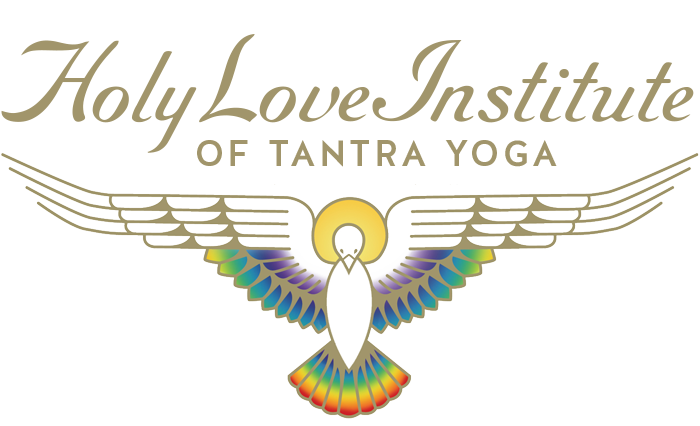What is tantra, a word so often associated with divine bliss and ecstasy?
We are constantly seeking bliss, true peace, happiness, nirvana. There is knowledge of this state of being planted in our hearts, in our every living cell. Bliss is our birthright. It is the home we are instinctively driven to return to in almost every waking moment. Tantra is the path of true bliss, which is beyond external circumstance. True bliss is drawn from consciousness itself, not what one is conscious of.
Tantra is a complex, holistic yoga and a comprehensive spiritual path, infused with great devotion for consciousness, energy, and embodiment. One element is the internal science of harnessing the power of kundalini, which could be translated in English most simply as passionate and creative energy, for the purpose of supreme awakening. Devotional rituals invoke divine awareness into all aspects of life. The primary goals of tantra are moksha (liberation) and bhoga (worldly pleasure, power, and abundance). Bhoga is ultimately subordinated and in service to moksha.
Tantra is a Sanskrit word that commonly refers to a sacred text (shastra or sutra) of the ancient non-dual yogic traditions. Shastric or textually based tantric traditions more often served the educated classes and scholars in the Classical period of ancient India and modern times alike. Yet every shastra has ancient roots in more radical folk traditions that were well-established for hundreds or thousands of years before they were ever written down. There are many indigenous Indian traditions of non-dual yoga surviving to this day which refer to themselves as tantric for their non-dual mode of practice, though they may be ashastric (without sutra) or otherwise passed on primarily through oral transmission. Sutra study may be integrated yet regarded as subordinate to the direct experience of sadhana (practice), guru initiation, and devotion. There are many common elements of philosophy, view, practice, devotion, and ritual in both shastric and ashastric tantric traditions. Dakini Temple teachers have received teachings from both shastric and ashastric streams, and pass on these teachings as they were given.
In what is known as the Left-Hand path or Vama-Marga of tantra, the human condition is embraced as the ultimate opportunity to awaken. It is not denied, avoided, repressed, or transcended in an absolute sense. Senses, desires, emotions, challenges, and hungers all present opportunities to be centered, compassionate, and vibrantly awake in every moment. Whether in dedicated practice and ritual or in the flow of ordinary daily activities, the practice is present.
Philosophically, tantra is not specifically a path of hedonistic indulgence nor of self-mortification (denial of repression of the senses). It is, above-all, a path of deep, vivid, meditative awareness and yogic practice under many different conditions – everything from austerity, solitude, and purification rites to desire, pleasure, and the cauldron of intimate relationships.
A refined, healthy, strong, supple yogic physical vessel is intentionally cultivated as a foundation for the path in order to experience the highest states of being, to be master-artists in the giving and receiving of love, and to truly taste all that life offers.
All pleasure, joy, nourishment, and rejuvenation cultivated within tantric practice is infused with pure motive as these fruits are essentially & ultimately for the purpose of blessing others with the energy, serenity, clarity, vitality, and wisdom that may result. Every act of the tantrika is, at its very core, for the benefit of all beings. This is the foundational pure motive that is the ‘wish fulfilling jewel,’ which can only emerge naturally, auspiciously, at your own ripe time through insight and practice.
This practice embraces totality in ourselves and in all things. The full spectrum of the psyche is explored and faced consciously through art and meditation, and the underlying creative kundalini energy is utilized in conscious, creative ways. Dualities are dissolved both within and without. All polarities are balanced and integrated.
Some elements of traditional tantra yoga can include pranayam (breath work), subtle-body (internal) yoga, meditation, yoga asana (postures), deity yoga, bhakti yoga (devotion), kriyas (cleansing), mantra (sound and chanting), puja (devotional ritual), mudra, yantra (sacred geometry), yoga nidra, karmamudra (sexual yogas), and artistic expression.
The tantric path may at times utilize passionate energy, intimate sadhanas, sensory meditation, and conscious transgression in advanced practice. Tantra yoga attends to all aspects of human life via yogic refinement: dharma (service and right living), artha (work and wealth), kama (art of love), and moksha (liberation). Though the senses are celebrated, the focus is on meditation and devotion, not on personal gratification or power. Ironically, when egoic selfishness is sacrificed and true compassion and absolute awareness are present, the highest bliss is possible.
The nature of your personal experience with tantra and the level of knowledge imparted to you will be entirely dependent on your personal intentions and how much time, energy, and devotion you put into your personal practice.
Tantra is impossible to define easily or completely. If it seems "a mysterious topic", it’s because it is meant to be. In all lineages much information is guarded and is progressively revealed only as initiates become ripe for them, as in any important progressive learning process dealing with powerful technologies.
Though reading on the topic is recommended, it cannot be your sole resource for learning. Traditional texts and canons are meant for initiates, and only as intellectual supplements to direct experience. They may seem like incomplete or incomprehensible esoteric poetry to the uninitiated. Aside from the coded nature of the literature, it is often marred in translation from the ancient tongue of a specific and isolated culture into English. Modern texts may be some-what more accessible intellectually, but the tantric paths require the loving, skilled, and knowledgeable transmission of a teacher to unlock the deepest meaning and to integrate the information into direct experience. - E. Bast


